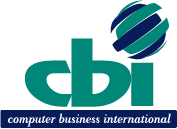
866.224.4968
Computer Business International, Inc.,
is an on-site or virtual, hands-on
instructor led
Db2 for z/OS
education, training and consulting
company
with over 30 years of Db2 experience.


Structured Basic COBOL Programming
This fundamentals class covers the use of structured COBOL programming techniques to design, code and test COBOL programs
Duration: 5 Days, hands - on Labs.
Audience: This course is designed for application programmmers and systems analysts who are or will be using COBOL 85 standard from COBOL for MVS thru Enterprise COBOL.
Prerequisites: A background in Introduction to Data Processing, a background in using an editor, job submission and looking at the output. Basic TSO/ISPF skills.
Structured Basic COBOL Programming Class Outline:
Introduction to COBOL
 History and Versions of COBOL
History and Versions of COBOL Structure of a COBOL Program
Structure of a COBOL Program COBOL Language Structure
COBOL Language Structure Coding Rules in COBOL
Coding Rules in COBOL COBOL Method Definitions
COBOL Method Definitions- - IDENTIFICATION DIVISION
- - ENVIRONMENT DIVISION
(INPUT-OUTPUT SECTION ONLY) - - DATA DIVISION
- - PROCEDURE DIVISION
 Example of a simple program structure
Example of a simple program structure Lab: Create our first program
Lab: Create our first program
Data
 Variables, Literals and Figurative Constants
Variables, Literals and Figurative Constants Define the variable, literals, and figurative constants
Define the variable, literals, and figurative constants
in COBOL Data types in COBOL
Data types in COBOL Level Numbers in COBOL
Level Numbers in COBOL DISPLAY and MOVE in COBOL
DISPLAY and MOVE in COBOL Moving a value to an identifier in COBOL
Moving a value to an identifier in COBOL Records and Files
Records and Files Fields,Structures,PICTURE
Fields,Structures,PICTURE Working-storage
Working-storage Lab: Working storage in a program
Lab: Working storage in a program
Input/Output Options
 Loop Control
Loop Control Using OPEN, READ, WRITE, CLOSE
Using OPEN, READ, WRITE, CLOSE File Handling
File Handling Record Building
Record Building Using GOTO, EXIT PROGRAM, STOP RUN, GO BACK
Using GOTO, EXIT PROGRAM, STOP RUN, GO BACK Look at Data Manipulation
Look at Data Manipulation Lab: Working with input/output options in a
Lab: Working with input/output options in a
COBOL Program
Processing Input and Output
 ACCEPT statement with SYSIN and SYSOUT
ACCEPT statement with SYSIN and SYSOUT
Parameter of JCL DISPLAY and MOVE in COBOL
DISPLAY and MOVE in COBOL PERFORM UNTIL
PERFORM UNTIL Moving a Value to an identifier in COBOL
Moving a Value to an identifier in COBOL Move Mode and Locate Mode Processing
Move Mode and Locate Mode Processing Buffers
Buffers End of File Processing
End of File Processing Data Element Naming
Data Element Naming Lab: Working with DISPLAY/MOVE
Lab: Working with DISPLAY/MOVE
Numeric Data / Arithmetic Operations
 Packed decimal data
Packed decimal data Binary integer data
Binary integer data ADD
ADD SUBTRACT
SUBTRACT MULTIPLY
MULTIPLY DIVIDE
DIVIDE
Numeric Data / Arithmetic Operations - continued
 COMPUTE
COMPUTE USAGE
USAGE Lab: Working with numeric data
Lab: Working with numeric data
Conditional Processing
 IF-ELSE Statement
IF-ELSE Statement Example of IF-ELSE statement in COBOL
Example of IF-ELSE statement in COBOL  EVALUATE statement in COBOL
EVALUATE statement in COBOL Different Types of EVALUATE statements
Different Types of EVALUATE statements Example of EVALUATE Statement
Example of EVALUATE Statement Different Types of PERFORM Statements
Different Types of PERFORM Statements REDEFINES and RENAMES
REDEFINES and RENAMES User-defined Classes
User-defined Classes COPY Statement
COPY Statement Lab: Working with conditional processing
Lab: Working with conditional processing
File Handling
 Different types of files in COBOL
Different types of files in COBOL Details about Sequential Files
Details about Sequential Files Options for Sequential Files
Options for Sequential Files File Handling - OPEN and READ
File Handling - OPEN and READ File Handling - WRITE and START
File Handling - WRITE and START REWRITE, DELETE and CLOSE
REWRITE, DELETE and CLOSE Lab: Coding a Program using
Lab: Coding a Program using
sequential file/write records to the output file
String Handling in COBOL
 String operations in COBOL
String operations in COBOL STRING operations detail
STRING operations detail  A Program to perform STRING Operations
A Program to perform STRING Operations Understand UNSTRING Operation
Understand UNSTRING Operation Sample UNSTRING Program
Sample UNSTRING Program UNSTRING Operation detail
UNSTRING Operation detail Analyze the output of the UNSTRING Operation
Analyze the output of the UNSTRING Operation Lab: Code a PROGRAM to execute INSPECT
Lab: Code a PROGRAM to execute INSPECT
Arrays
 Definition of an array
Definition of an array Creating a one-dimensional array
Creating a one-dimensional array Creating a two-dimensional array
Creating a two-dimensional array INDEXED BY arrays
INDEXED BY arrays SUBSCRIPT in arrays
SUBSCRIPT in arrays Difference between SUBSCRIPT and INDEX
Difference between SUBSCRIPT and INDEX Lab: Working with Arrays
Lab: Working with Arrays
Print Files
 Page Break Logic
Page Break Logic Control Fields
Control Fields Logic for Control Fields
Logic for Control Fields Report Break Logic
Report Break Logic End of File Logic
End of File Logic Report Dates
Report Dates Line Counting
Line Counting Lab: Using Page and Control Breaks
Lab: Using Page and Control Breaks
- © Computer Business International, Inc.
